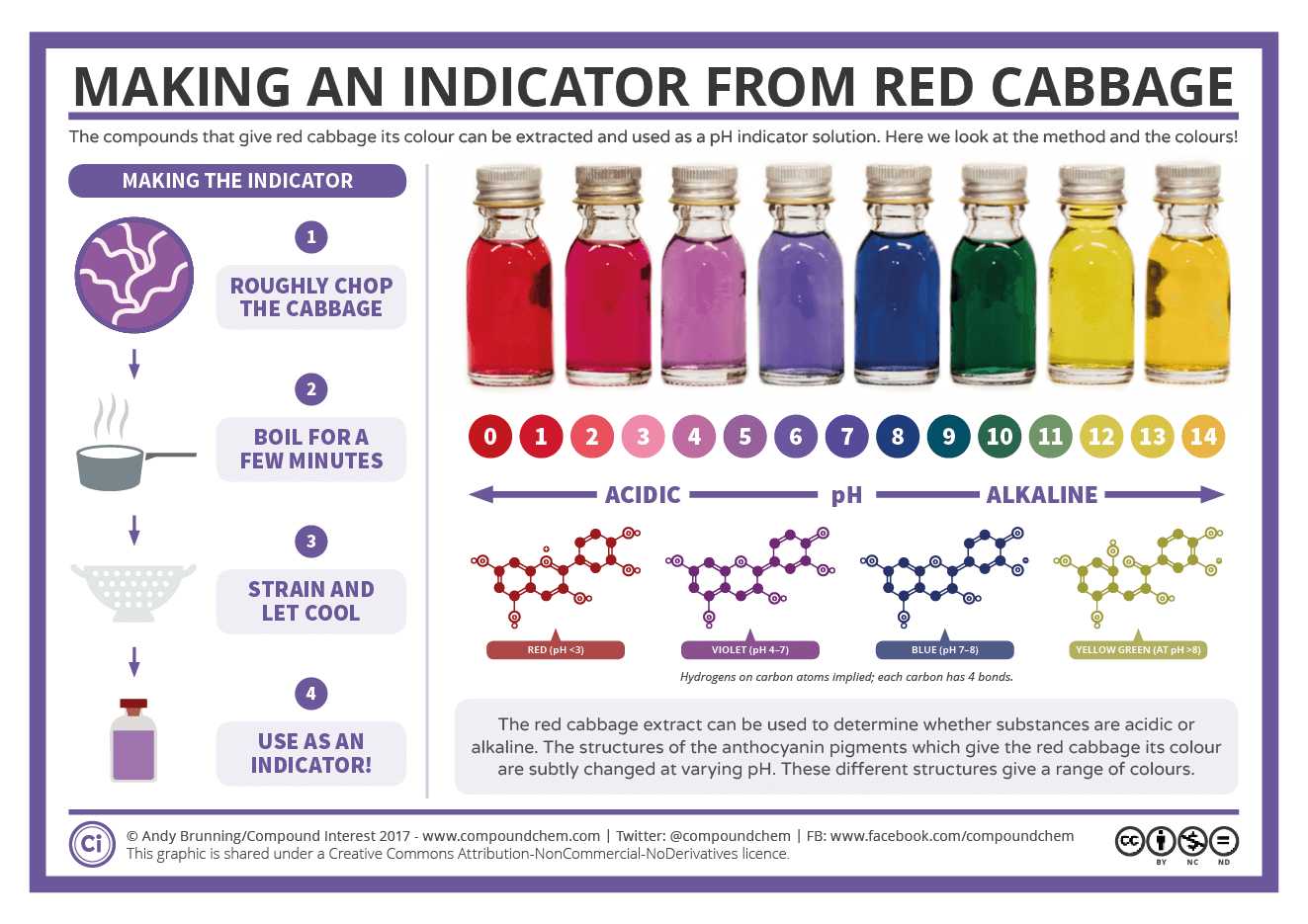DIY: Making a pH Indicator from Red Cabbage
Image: Making an indicator from red cabbage Did you know that red cabbage juice contains a natural, water-soluble pigment called a flavin (a type of anthocyanin), which changes color when exposed to solutions with different acidity levels? Acids turn the pigment red, neutral solutions create a purple/blue color, and alkaline solutions turn the flavin green to yellow. To make your own pH paper strips using a red cabbage indicator, take filter paper (or coffee filter) and soak it in a concentrated red cabbage juice solution. After a few hours, remove the paper and hang it to dry. Cut the filter into strips and use them to test the pH of various solutions. To test a sample, place a drop of liquid on the test strip. Don't dip the strip in the liquid because you'll get cabbage juice in it. An example of a basic solution is laundry soap. Examples of common acids include lemon juice and vinegar. For complete instructions on how to make and use cabbage juice as a pH indicator, go to thoughtco.com/makingred-cabbage-ph-indicator-603650. ♥ top | Newsletter Home |Table of Contents| Archive
|



